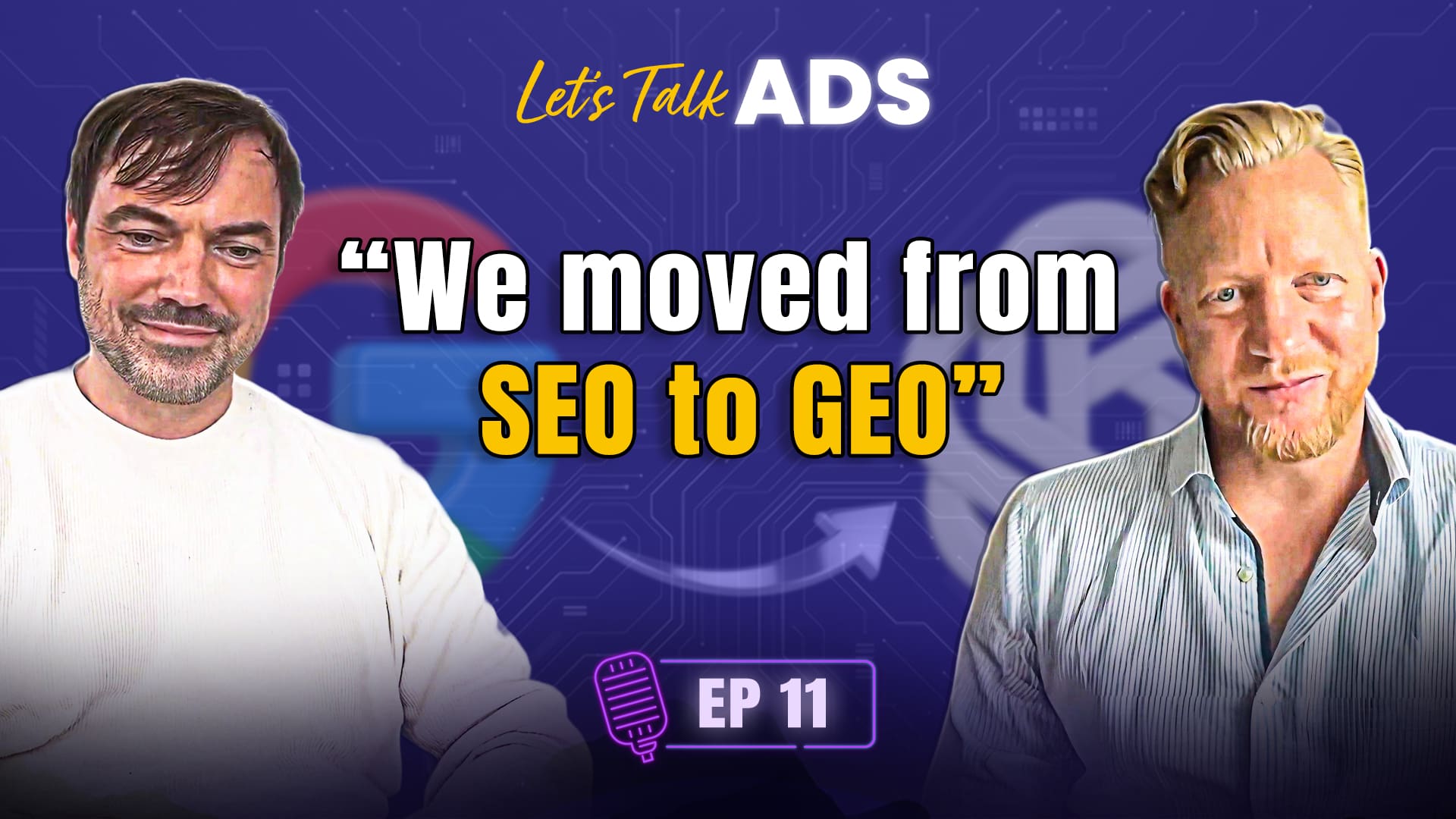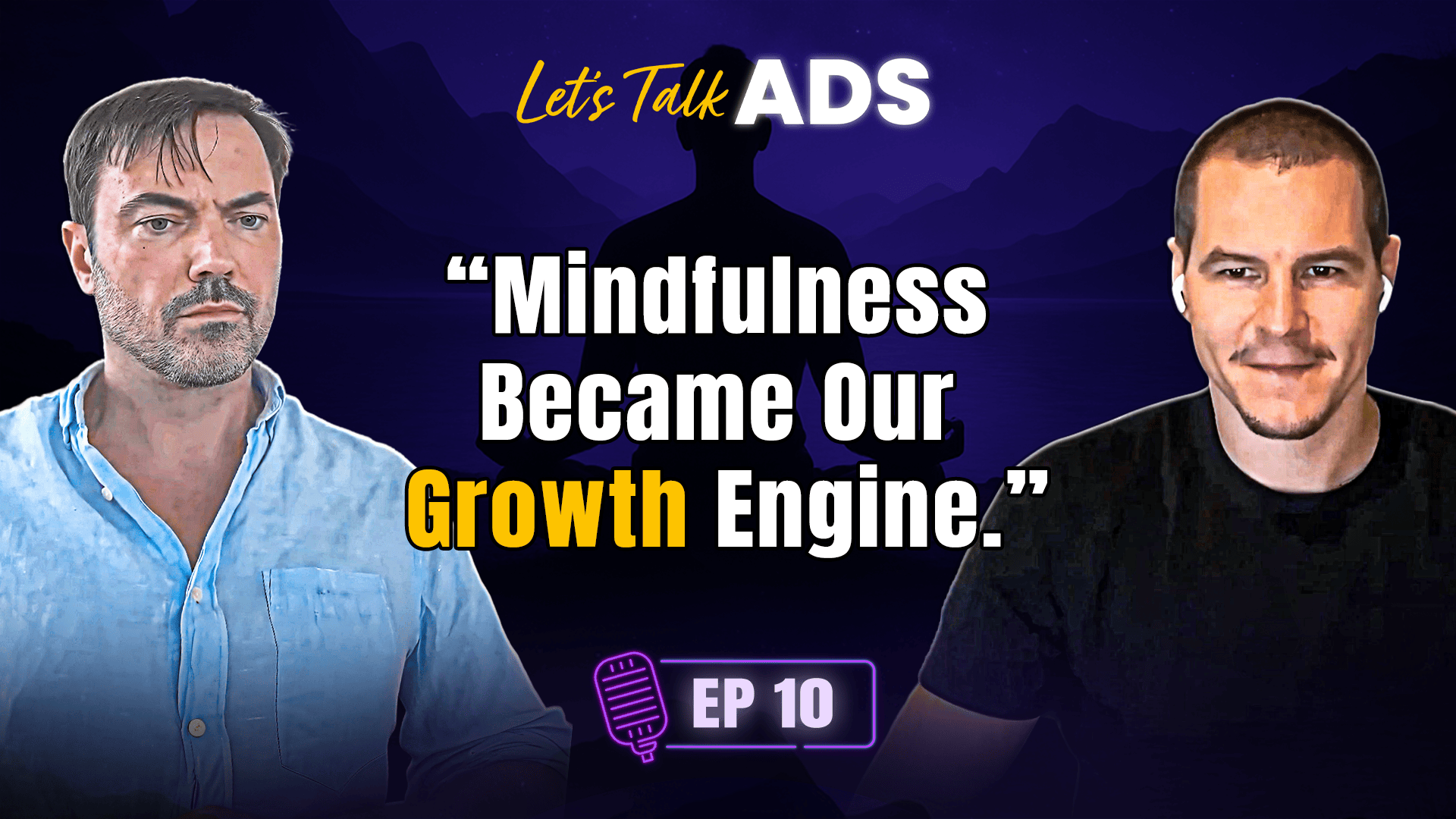#117: App Subscriptions Best Practices with Tobias Boerner, Co-Founder at Admiral Studio
App Subscription Best Practices with Tobias Boerner
Intro: This is the Business of Apps Podcast, bringing you actionable insights from the leaders of the global app industry and the world’s fastest growing apps. You can find more app news, data and analysis over Businessofapps.com.
Artyom: Welcome to The Business of Apps Podcast. On this show we invite app industry professionals to cover various topics. We promise to do our best to keep it both insightful, but brief. In this episode, we have Tobias Boerner Boerner co-founder at Admiral Studio. Tobias Boerner Welcome to business of apps podcast.
Tobias Boerner: Hi. Art. Thanks for having me.
Artyom: Terrific. Thank you for coming. Alright. It’s been a while since we talked about app subscriptions on this podcast, the latest business model for mobile apps that powers revenue generation for so many apps today. It all started with video and audio streaming services, such as Netflix and Spotify. And then it turned out that the model actually works for so many other apps, but popularity doesn’t necessarily mean that app brands actually know how to make the most of it. On this episode, we have Tobias Boerner to talk about the best practices for app subscriptions, but first as always in the show. Tobias Boerner tell us about yourself a little bit, what is your background in tech?
Tobias Boerner: I came to tech around 2010. So back in the days, the time before I worked in a local government in my hometown and consulting for local entrepreneurs and those people always inspire me a lot. And then I decided someday to switch sides and start my first footprint into the internet business project called, 10 years ago, it’s called club culture, it was a party community where we send them photographs at parties. And the next days we have to upload this on a website. And we try connecting in this way, like the nightlife to the party environment. And during this time I met a lot of very awesome people in the internet space. And yeah, this was my first touch point with this world. And this definitely got me. I had feelings that this is definitely my space and I met also my co-founders for my first really impactful startup called Lovoo was one of the leading dating apps in Europe.
And I did this almost for 10 years. Since day one, I was CMO at Lovoo and had also a strong passion for everything that is connected to growth and subscription handling as well. And yeah, after we decided to sell that company to the mid group, I also, co-founded a few months later, a company for wellbeing and health called Fastic. It’s one of the leading in the mid festing apps in the world right now. And yeah, that’s my journey with apps. All apps so far are subscription focused and mobile first. And right now with Admiral Media and Admiral Studio, I also help companies with growth consulting, especially for onboarding optimization, like have a very strong look on how is the subscription business going. Look on the KPIs and try to bring my experience on the table.
Artyom: Oh, that’s great. 10 years may not sound that much for a human being, yet alone for the universe. But for mobile 10 years, just like ages. 10 years ago, Instagram was just two years old and Facebook wasn’t even there as where it’s right now, not even close to having two billion users. So nobody heard about TikTok obviously 10 years ago. So yeah, time runs fast. And let’s talk about the Admiral media and Admiral studio. I know pretty well about your Admiral Media business, but this is the first time I heard about Admiral studio. Please tell our audience about both companies.
Tobias Boerner: Yeah, sure. The Admiral Studio is quite new. I decided with Andre who is the founder of Admiral Media, together we came up with the Studio and it’s all about Web3. And we do multiple things here to start with and to be very good in things it’s very important to have a very deep understanding of how this world is working. And this is always my way, of how to jump in a new task or in the blockchain space for example. We decided to release in the studio own collections for NFT space, for example, and we came up also with an app dedicated for NFTs. It’s a little bit connecting with the Web3 world. And we believe here in the studio that very soon in the new future, a lot of companies need help with marketing approaches and we make that happen and we will very soon release a lot of new activities in the Web3 space.
Artyom: Yeah, definitely. I think I’m kind of a proud example of not really grasping NFT concept, because for me it’s pretty fancy, interesting, but still doesn’t sound like something promising something that is going to rise up quickly. But I think I may name minority in this opinion. Probably just my age, being 45, I’m not young anymore. Let’s switch on app subscriptions, the topic for this conversation. I think it is safe to say, but by now app business is primarily around three models, advertising, in-app purchases and in-app subscriptions. So my question is under what circumstances businesses should choose their app subscriptions model? And if it’s financially and technically feasible to switch to this model, or you have to start with this model from day one?
Tobias Boerner: Very good question. And hear this also quite often from founders. What I often see is that apps they monetize through ads only start along the journey thinking, oh, how can we implement subscription or how is it possible to switch to subscriptions? So I really hear this often and also by the way, big guys are doing this right now, like Facebook and Twitter. But also for small, medium businesses, I think it can make sense. And I’m a very big fan of subscriptions, but I would not recommend to switch the model. So I think it’s a additional revenue stream. So for example, at Lovoo, we had 3 revenue streams. We had ads, we had subscriptions and we had in app purchases and all this from the beginning of the product. So back in 2011, imagine that there were no billing service like revenue cat or purchase lead.
There was no pushover like from fire base, for example, no CRM system. You have to build everything from scratch and this adding a massive complexity for products like Lovoo, but today in a world of third party, I think everything is faster and it’s definitely possible to come up with new and additional revenue subscriptions strategy. And I would always argue that it is very important that adding additional value to the customer is not just for the pockets of the subscription apps or for the subscriptions stream. So let’s be very creative and a very good example who did this very well to me, it’s Tinder for example. If you know the development over the years, they introduce so many different revenue streams and this is always an additional value for the customer and nothing else came behind the payroll, for example.
Artyom: Yeah. So by adding more models and not actually switching to the one, you’re kind of reaching to greater pool of users, some of them may be fine with in app purchases, some of them are okay with ads. If they get the value by watching ads, they don’t mind. And some part really don’t mind to pay on a monthly basis. This is their thing. They don’t want to see ads. They want to completely see the value and spending 5, 10 bucks a month. It’s just perfect for them, but they have to feel the confidence in the product like they do with Netflix or Tinder, like you mentioned. The value is clear. It’s there month after month, doesn’t diminish. They’re completely okay to spend that amount of money and just be fine.
Advert: What to improve your marketing skills, know how to fight back mobile fraud or how to launch and influence a marketing campaign? You’ve got it all at the business of apps insights, opinion, howtos, thought leadership and analysis from global app and social media industry, visit our insights section at businessofapps.com/insights/podcast. And now back to the show.
Artyom: But let’s switch to the next question, which is about mistakes. It’s always kind of a popular one because we all do mistakes. It’s unavoidable. Can you think of two, three common mistakes app businesses do when it comes to app subscriptions?
Tobias Boerner: Yeah. To app subscriptions, in general I would say what I figure out quite often, is that they have not enough or no AB test in place for the payrolls for example. I think this is what I always see is a very low hanging fruit. If you like changing somehow the copy or changing somehow a little bit of the design, this can vary lifting conversion rates. Another mistake I would say is to have no mobile CRM in place. It’s no code in most of the cases. You have a lot of people working with that. You can reach all your customers and not using this opportunity I think this is a very big mistake. I have another mistake, which is I would say not connecting to a subscription, but I think a mistake, if publishers believe that Web3 is only about, I think maybe with NFT, for some not clear to see use cases, but Web3 in general, I think this is a mistake if you don’t try to stop thinking, how can this be someday on my roadmap?
Artyom: Yeah, I totally would see what you’re saying about the lack of CRM, mobile CRM, just insane. If you’re getting on board more and more people on the app subscription, the DF subscription model and the name of the game, retaining this big pull of users, how can you manage this task on a monthly basis and retain these people if you cannot effectively manage the communication with them and mobile CRM has given. Now, we’re all aware of very well known examples of apps that run on the app subscriptions model, such as Netflix, Tinder, YouTube premiums, Spotify. But can you give us some examples of apps that are not known to people, something that’s not popular, not on the tech radar all day long?
Tobias Boerner: I think the most successful ones they are always well known. What I always use as an example of what they are doing this very well. My point of view is Duolingo. They are not small but this very famous language learning app, but I think they’re doing this on a world class level with the gamification approach when it comes to subscriptions.I really like the way how they’re doing it. I can also make a little bit of advertising here. Fastic is also a good example for the health and fitness environment. It’s definitely a very strong focus on subscriptions since day one. There is no other revenue stream yet. That’s two examples.
Artyom: Yeah. I guess I can testify that Duolingo is a pretty cool app. My wife has been using it for a couple of months and I can see how really, like the concept of the app. And I really don’t mind to pay for a subscription that I can clearly see the value. And you are absolutely right, the gamification in the case of Duolingo is done pretty well. That’s very well round, thoughtful, funny and engaging. It’s just a no-brainer. There’s a value to pay for on the monthly basis. Now you mentioned at the beginning briefly that big names are moving towards a subscription model. So what are your thoughts on the recent pay subscription plans launched from Snapchat, Twitter, Telegram. I understand it will be wrong to brush all this launches, all these cases with the same brush. Most likely these companies has their own unique reasons for doing so, but I believe there is a commonality which is advertising model doesn’t satisfy all financial needs to grow for these companies. So what do you think about this trend?
Tobias Boerner: Yeah, I like the trend, so it’s inspirational to see how the big boy is doing that. It’s hard to say something about that without knowing the KPIs that led to this decision. But I think it’s fair to say that the new revenue stream opened up a lot of new fantasy of future growth, especially for the stock exchanges. But I can reflect on that development and also based on my learnings that there isn’t really any cannibalization of the current ad business. This is what I also believe there is no kind of cannibalization. And I think in a few years from now, we will see more and more creative ways to open up new revenue streams. So especially now in this early days of Web3, it indicates already this development. And I think for the big guys, it’s definitely getting tough because they are somehow not bored enough to make very big changes in big bets. And I think there is a lot of room for the next generation.
Artyom: Yeah. Speaking of big guys, I think kind of a personal wish would be, wouldn’t it be great if Facebook switched on that subscription model and preferably 10 years ago when they were a small company, probably they wouldn’t have grown to that big company as they are now, but boy, the world will be really different if they were an app subscription model and not advertising. That would be profound. And the question I just cannot miss, what do you believe is coming up for the app subscription model in the near future?
Tobias Boerner: Of course you can’t miss that question. I think that this is very, very difficult to answer, but I think we will see, I mean, we see now the developments of that, but we will probably see 2023 that governments forced more and more Apple and Google to get rid of the Apple and Google fees. So I think this is something that already happened in the EU especially with Google. And I hope this will happen someday because this will open more flexibility for app businesses. This gives also more room for creativity. And especially like to me, this will help the combined Web3 and the coin business world with the Web2 environment. Because right now everything is very controlled by Apple and Google and I think this will also be adding more options for subscription businesses.
You can have a lot of ideas in mind which is now a little bit tricky with companies that control, let’s say 99% of the customers. But in channel for subscriptions, I think, and this is what we see now, it’s very challenging to get new subscribers on board because the costs are rising year after year. And maybe now it’s slow down because of the recession, but then it continue to rise. And this will result in the fact that you either need to decrease your overhead costs or you deliver such a strong value, the retention increases somehow, or you have stronger organic rates than the average. So I think there’s definitely challenging times ahead.
Artyom: Yeah, absolutely. I completely agree with you. That app subscription model is really promising, and this is the great engine for the app industry to grow. I’m just looking around for people who are paying for media subscription businesses like Netflix, Apple, Hulu, Peacock, Amazon prime. And it’s not a question of app subscription model, just a question of how much are you willing to pay for content that is unique to other platforms? App subscription is just a tool. There’s no blame behind this tool, but it’s just coincidence that app subscription is associated with media businesses that are doing their best to pull customers to them for unique content. Personally I pay for Apple TV and Netflix and Amazon prime and you’re kind of thinking, should I stop paying for Amazon prime and go to Paramount or Disney plus? Yeah, that’s a bit tricky.
We are finished with the major question on the table and transition to the second part of this show where every guest has a chance to answer just a set of quick questions. So I can get from my audience a better picture of my guests. Question number one, what smartphone do you have now? And have you been switching between just two giants, which is mentioned a Android in iOS, or just staying one side?
Tobias Boerner: Stay with iOS and I try to have always the latest version of that.
Artyom: I see. True, just like me. If you remember the days before the smartphone era what was your mobile phone back then? The flip phone.
Tobias Boerner: I’m really trying to remember. I believed it called Sagem or somehow. I guess it was this kind of device where you can open and close it, like at least the company called Sagem. It was well before Nokia stopped getting the biggest mobile phone company in the world.
Artyom: I think back then that was the smartphone of that day. People couldn’t imagine that smartphone can get way much better, way much smarter. Imagine you left your smartphone today, your iPhone, what would be the most missing feature when you are out?
Tobias Boerner: To me, it’s to be connected? So I, in the most cases it’s like if I look on my smartphone usage, most of the times Slack and WhatsApp.
Artyom: I see. And what new app technologies are you most excited about or what feature on your iPhone could the hardware and software that is not there yet? Something that is not capable of doing, but you would like this smartphone be able to do.
Tobias Boerner: What I’d be most excited about is the whole connection with the real world. So I’m looking for more and more developments in this direction and this AR VR stuff. It’s definitely something that I’m interested the most. And I think also will play a major role in the Web3 development in the next few years.
Artyom: Oh, right. And before I let you go just very final question. How can people get in touch with you and get more information about what you do?
Tobias Boerner: Easiest way is always linked. So just my name Tobias Boerner Boerner and there we go.
Artyom: Terrific. Tobias Boerner thank you for coming on the show. Thanks a lot. Bye bye.
Tobias Boerner: Thanks for having me bye bye.
Artyom: And that was Tobias Boerner Boerner co-founder at Admiral Studio. To listen to more episode, subscribe to our podcast on iTunes, Spotify, Stitcher, Google podcast, just search for business apps, and you will find us easily. We release episodes on Mondays. So subscribe and you’ll be able to get new episodes on your smartphone, tablets, or computer as soon as we release them. And please, don’t forget to leave us a review and comment on iTunes. It is highly appreciated and this will also be available on Businessofapps.com. Thank you for listening. Say you next week.
Outro: Thank you for listening to the business of apps podcast. For more head on over to Businessofapps.com.





